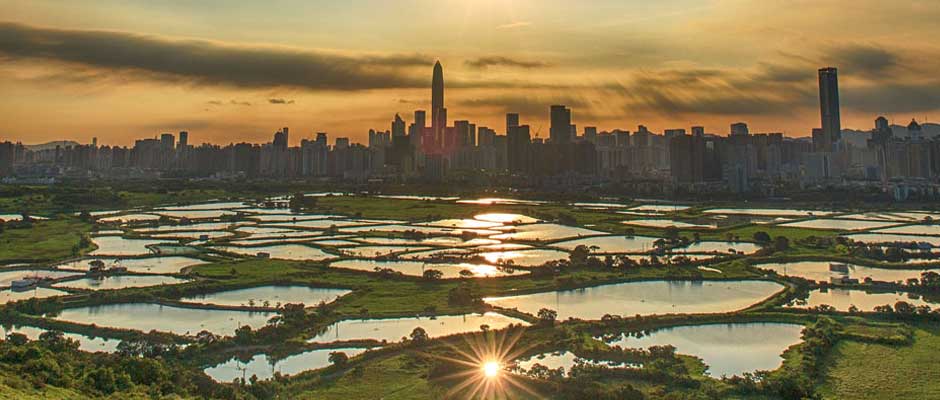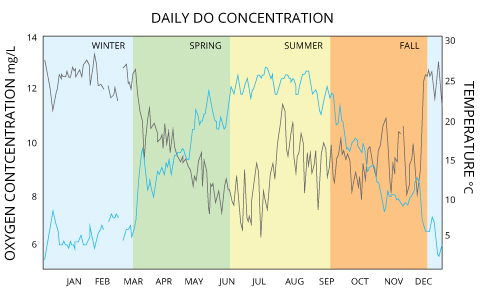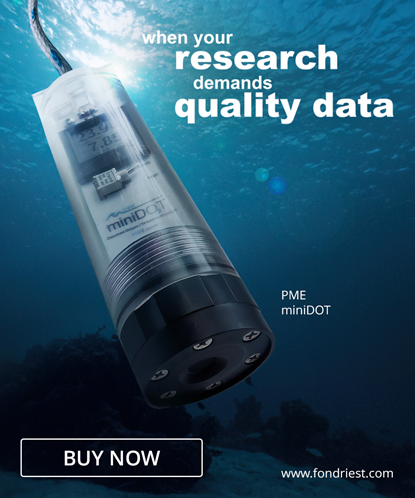The Daily Dissolved Oxygen Cycle, Explained

Dissolved oxygen is one of the most important factors in ensuring the healthy growth of the animals within your aquaculture system. Whether tilapia, catfish, shrimp or clams, everything in your ponds needs enough oxygen not only to survive, but to thrive.
There are plenty of questions to ask and issues to consider when it comes to dissolved oxygen, but one of the basic questions worth considering more deeply is that of the daily dissolved oxygen cycle.
The amount of oxygen in water is not static. It can be affected by the water’s plant and phytoplankton life, temperature, movement and mixing. Some of these factors influence only long term trends, but throughout a 24-hour period, the dissolved oxygen in an aquaculture pond will fall and rise with regularity.
Two processes drive the cycle
The two processes driving this cycle are photosynthesis by the pond’s plants, phytoplankton and algae and respiration by the same plants and the pond’s animals: fish, shrimp or clams.
Photosynthesis is the process by which plants, algae and phytoplankton turn sunlight into energy or food. The process can be expressed simply: Plants take carbon dioxide and sunlight and turn it into sugars and oxygen. Photosynthesis occurs in the same way on land as it does in water.

Photosynthesis provides most of the oxygen available in an aquaculture pond.
Photosynthesis will be slower or faster depending on several factors: significantly, the amount and strength of sunlight and the clarity of water.
In photosynthesis, the raw materials plants and phytoplankton start with are carbon dioxide (carbon and oxygen) and water (hydrogen and oxygen). It turns those into sugar (carbon, hydrogen and oxygen) and oxygen molecules. Sunlight provides the energy to break apart the water and carbon dioxide and form the oxygen and sugar.
In an aquatic system, water is plenty abundant. In an aquaculture system, carbon dioxide is readily provided by respiring animals.
The other process that impacts the daily dissolved oxygen cycle is respiration.
Respiration is the process through which organisms take oxygen and sugars and turn them into carbon dioxide, water and energy. The animals in any aquaculture system are doing this constantly. A halt in respiration means asphyxiation.
It may be apparent at this point that photosynthesis and respiration complement each other nicely. Plants, algae and phytoplankton take in carbon dioxide and release oxygen, which animals take in to release carbon dioxide. It seems a perfect cycle.
The Daily Disruption to Photosynthesis can Mean Trouble
However, the cycle of respiration and photosynthesis is interrupted for large portions of every day.
When sunlight disappears from sunset to sunrise, photosynthesis stops. Respiration, however, occurs day and night.
The intermittence of photosynthesis and the persistence of respiration means that during the nighttime hours, the amount of dissolved oxygen in a closed system steadily declines. It continues to decline until the sun rises in the morning and photosynthesis can occur again.
Graphing the dissolved oxygen concentrations for a week would show seven peaks in the late afternoon and seven low points around dawn.
But the peaks and valleys won’t all be equally high or low, unless the excess production of oxygen during the day exactly balances the excess consumption during the night.
Over a week, the overall average of dissolved oxygen may increase or decrease, even as it experiences daily peaks and valleys.
For this reason, it’s a good idea to not only measure the current dissolved oxygen level, but the long term trend as well. This can help you predict when a pond might dip below safe levels before they do.
Rather than waking up one morning to a pond of fish dead or dying from oxygen deprivation, you can take preemptive action to ensure levels that will keep fish healthy and growing.

Other factors affecting photosynthesis and oxygen levels
There are many more factors affecting photosynthesis than whether or not the sun is up.
Plants and algae produce less oxygen if something is between them and the sun. Clouds, other plants or a thick layer of algae all can reduce the amount of photosynthesis that occurs.
Beyond that, water temperature affects how much oxygen water can hold. And, a pond that doesn’t mix might develop areas of low oxygen.
However, the daily cycle of sunrise and sunset has a major effect on the amount of oxygen available to an aquaculture system at any time. Regularly measure it, track its long term trend and head off any disasters before they occur.
Top image: Each day, sunrise and sunset mark the beginning and end of photosynthesis in an aquaculture pond.



0 comments